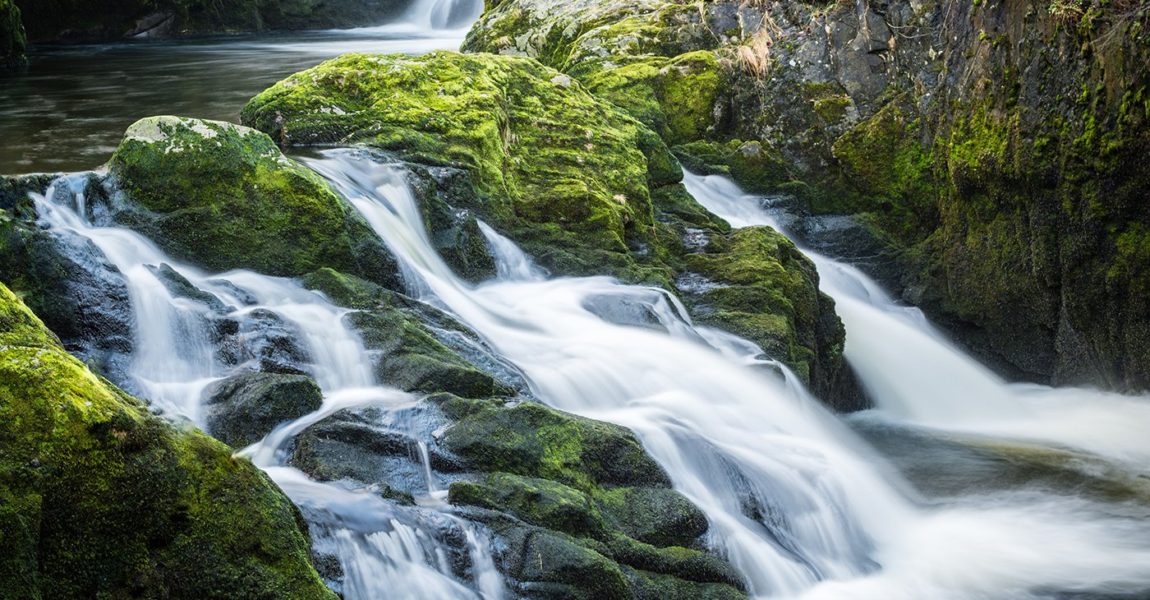
Arakawa River in Yakushima land
Location: Kamiyaku-cho & Yaku-cho, Kumage-gun, Kagoshima Prefecture

Spring water from the island’s interior is some of the softest water in the world. The local bottling company, states a hardness of 10, with only 3mg of calcium per liter. (Soft water is often defined as having less than 60~100mg/L of calcium) Perhaps this is why the Yakusugi trees grow so slowly, or why the deer nibble on sign posts and eat their antlers when they fall off annually. Since the island is so small and the mountains so steep, we rarely have to worry about water quality and potability.
To keep the water this clean is the first item of the Yakushima Charter, established in 1993.
Although only short stretches of river are navigable, kayakking, show-climbing, and jumping into deep pools of river water are popular activities in the summer. Fishing is good around the mouths of rivers, or in the ocean.
All natural water in Yakushima, an island of UN World Heritage, is certified as remarkable water by the Japanese government.
Certified as World Heritage, Yakushima Island is full of virgin forest. The island has the highest mountain in Kyushu region, “Miyanoura-take” (1935m) at its center, which is the mother of many rivers that run through the multifaceted mountain surface. Almost all the rivers on the island originate in the mountain, and all the natural water on the island is certified as one of 100 remarkable waters in Japan by Ministry of Environment.
Very rich in great sceneries such as a lot of large water falls like ones that drop from sheer cliffs, the island of great nature has a lot more to see than only the famous great old cedar.
Yakushima enjoys the warm waters brought by the Kurio Shio Current up from Taiwan and Okinawa. Despite having such steep mountains, Yakushima also has (disappearing) sandy beaches, as well as coral coasts supporting an array of both tropical and cold water fish — almost as many species as one would find in Okinawa. At the Nagata-Inakahama Beach, designated a Rumsar Sight, loggerhead and green sea turtles make ten thousand landings a year during the nesting season.
Fishing has always been a large part of island life. Although overfishing–blamed mostly on large commercial boats encroaching on local waters–has become devastatingly apparent, the locals have adapted. Instead of Katsuo Tuna, smoked and cured macqueral from Yakushima is highly acclaimed. Maqueral fisherman used to mark fish reserved for their own families by breaking the necks, and this is now a popular way to enjoy fresh sashimi, too. Anbo is Japan’s number one flying fish port. They say there used to be so many flying fish enjoying nourishment from coastal forests, that the delta would turn white during spawning season.
It is no wonder, then, that Ebisu, the patron god of fishing, is highly celebrated, with small shrines looking out to sea over all the harbors. Tourists and locals enjoy several swimming beaches, snorkeling, diving, kayakking, and fishing.
